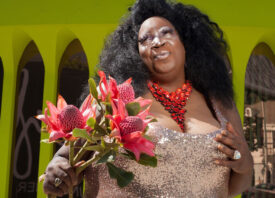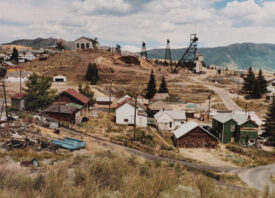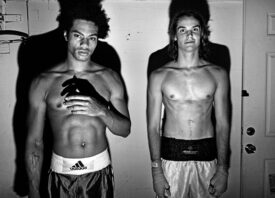Search this site
These Queens Pioneered the Art of Drag. Now They’re Finally Getting Their Due.


Harry James Hanson and Devin Antheus heard about the night Phatima Rude stood up to the police firsthand. They were visiting Rude in San Francisco’s Mission District, and she recounted the story while holding her dog, Mary Kate. In 2010, Rude had been hosting a Queer Autonomous Zone party at Station 40 when the police tried to come in. She protected the door for three hours, and she won: the police gave up and left, and the party went on as planned.
Stories of courage, resistance, and triumph run throughout Legends of Drag, the captivating book by Hanson and Antheus, out now by Abrams Books. Hanson is an artist, creative director, stylist, and drag artist; they also did the photography for the book. Antheus is a floral stylist, tarot reader, diviner, and author. Together, they traveled the country, touching down in sixteen cities over the course of four years. The queens themselves often chose the flowers featured in their portraits, with many bearing personal and symbolic significance.
Each queen is different–an understanding of the diversity of experience and identity was central to the book’s creation–but there are shared threads. Throughout the decades, these artists, who ranged in age from forty-tree (Lady Red Couture) to ninety-one (Darcelle XV) at the time of their photoshoots, didn’t just bear witness to history. They helped shape it. Donna Personna frequented Compton’s Cafeteria in the 1960s. She knew the trans women who protested against police harassment and violence three years before Stonewall.
As a teenager in 1975, Joan Jett Blakk was at Detroit’s first gay Pride picnic, and in the 1980s, Pickles protested with ACT UP in Chicago. In June of 2020, following the murder of George Floyd, Lady Red Couture told the story of her grandfather, who came out of slavery at the age of thirteen–while sharing words of wisdom, power, and love when the country needed it most.
Hanson and Antheus were able to continue the project amid the pandemic because the photoshoots and interviews could take place safely outdoors. “We can’t imagine a way we’d rather spend the apocalypse than meeting these queens and creating this time capsule,” Antheus writes in the introduction.
Ultimately, Legends of Drag is just as much about the smaller, everyday moments that make up the landmarks and milestones. While exploring Marshall’s Beach with Mrs. Vera Newman, Hanson and Antheus spotted a dolphin pod, and the dolphins followed them along the beach as they took in the sunset. In Los Angeles, they went to The Goddess Bunny’s favorite dinner, where she had shrimp cocktail and white zinfandel for breakfast and sang along to California Girls by the Beach Boys. Fontasia L’Amour brought a leaf-blower to her photoshoot.
In Chicago, JoJo Baby, who makes dolls, brought an anatomically correct, oversized doll from her collection. In Las Vegas, Hot Chocolate drive the artists back to their hotel; she worried they’d be cold–a testament to her motherly concern. She later took them for Sangria on a rooftop pool. While in North Carolina, Hanson and Antheus foraged for beautyberries, the perfect choice for their shoot with Ebony Adams. They met Simone for the first time at the Stonewall Monument in New York.
The stories contained within these pages are vital, and even amid uncertain times, they’re often hopeful. At a moment when certain individuals in Florida, Arizona, and Texas are proposing to ban minors from drag shows, one anecdote stood out to me as a reminder of the enduring magic of drag–for people of all ages. While Hanson and Antheus were hanging out with Sister Roma at San Francisco’s Grace Cathedral, a child called out: “Look Mommy, A Queen!” Another kid paused to pick up and return a flower that had fallen from Sister Roma’s head.
Perhaps more than anything else, Legends of Drag is an ode to friendship, family, sisterhood, and collaboration–and it could not have come at a better time. It’s a testament to the importance of intergenerational bonds and the passage of knowledge from one era to the next. The book begins with Phatima Rude, who is one of four legends in the book who are no longer here. But as Antheus writes, she isn’t “truly gone.” Her daughters from the House of Rude carry her legacy.
In San Francisco, people told Hanson and Antheus again and again about how Rude had welcomed them when they first arrived in the city; she’d done their hair and makeup, and she’d made introductions. For a while, she also drove for Homobiles, a pay-what-you-can, secure car service for the LGBTIQQ community and allies. Antheus remembers, “She met each passenger with the consistent greeting: Hi babe, where are you going?”
Get your copy of Legends of Drag here.








All images © Harry James Hanson and Devin Antheus



